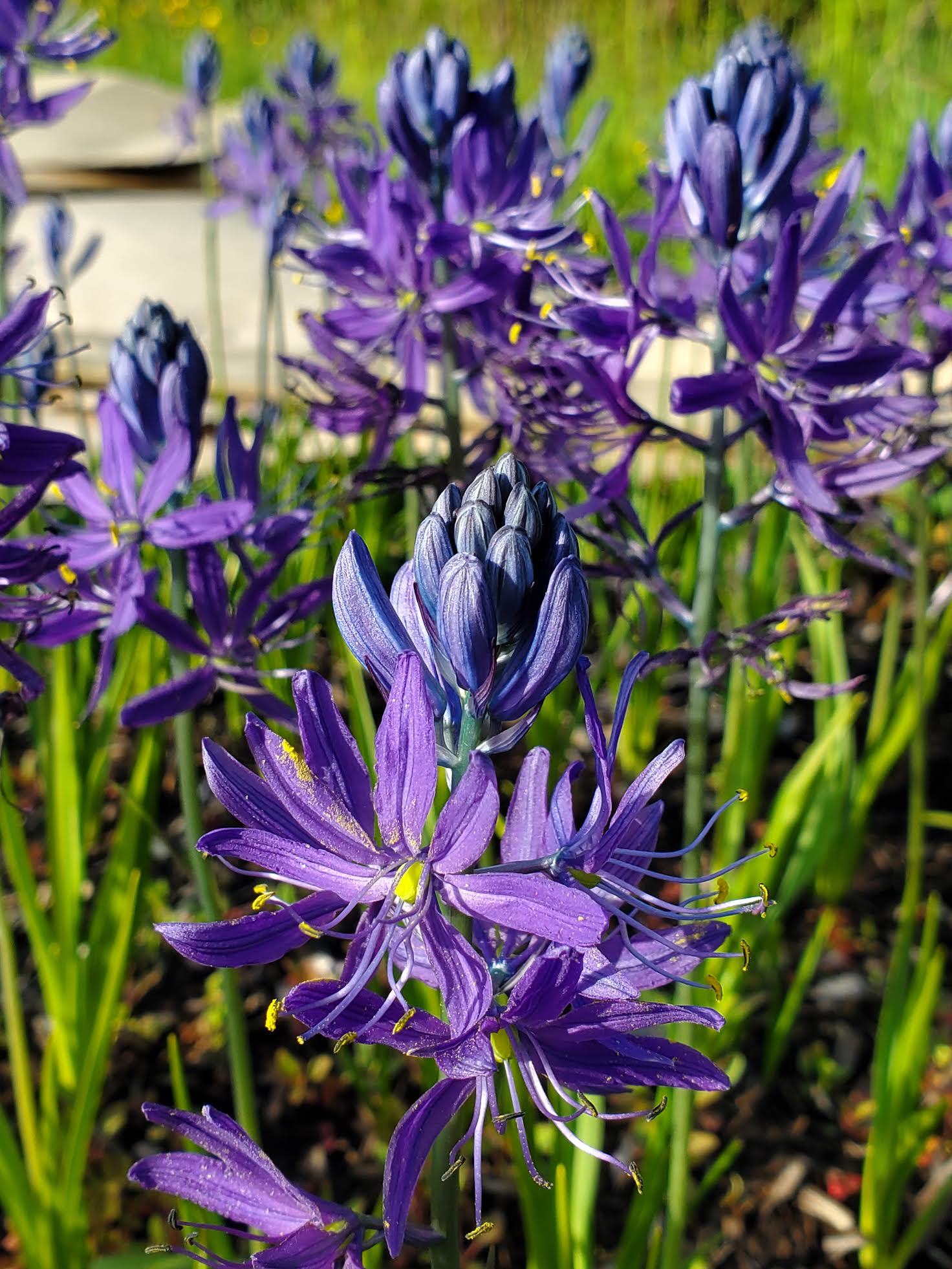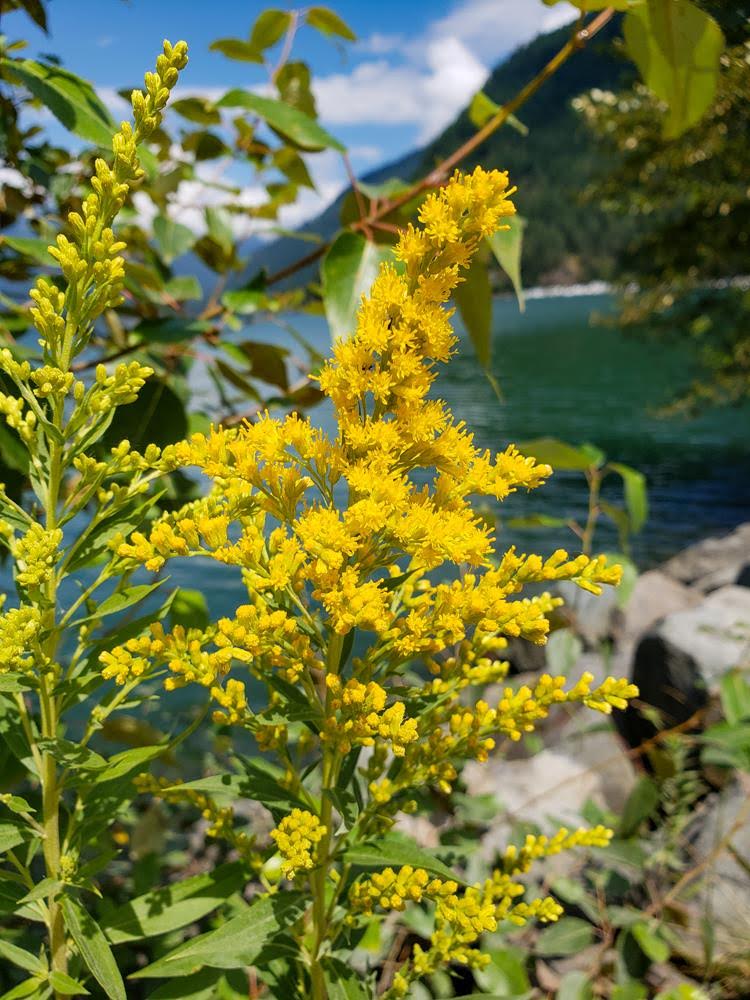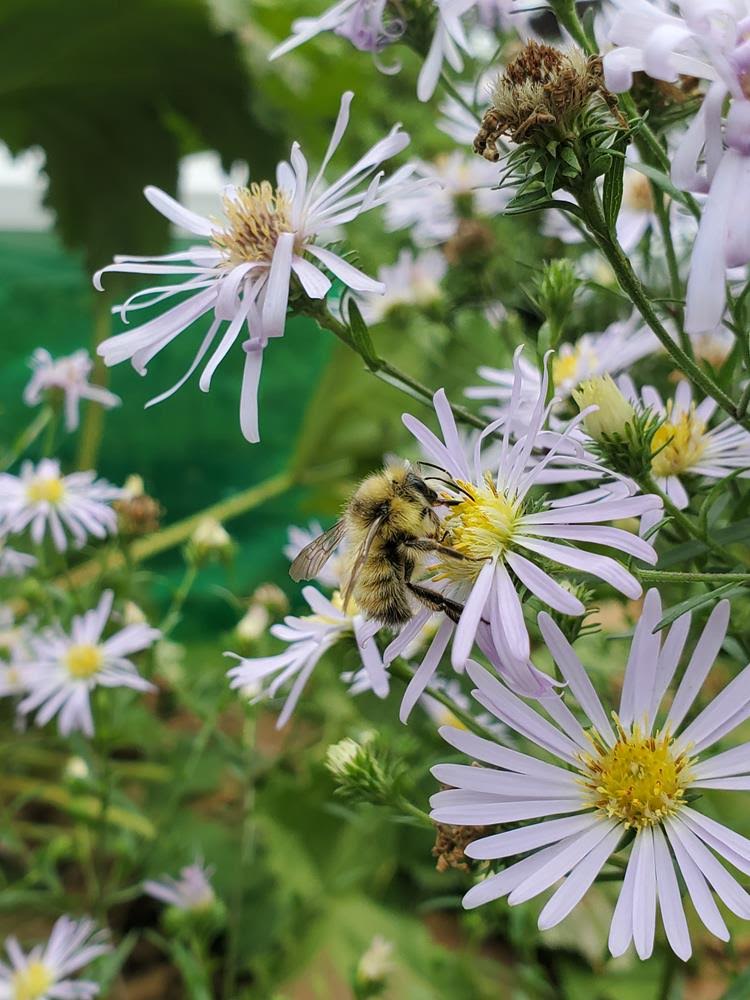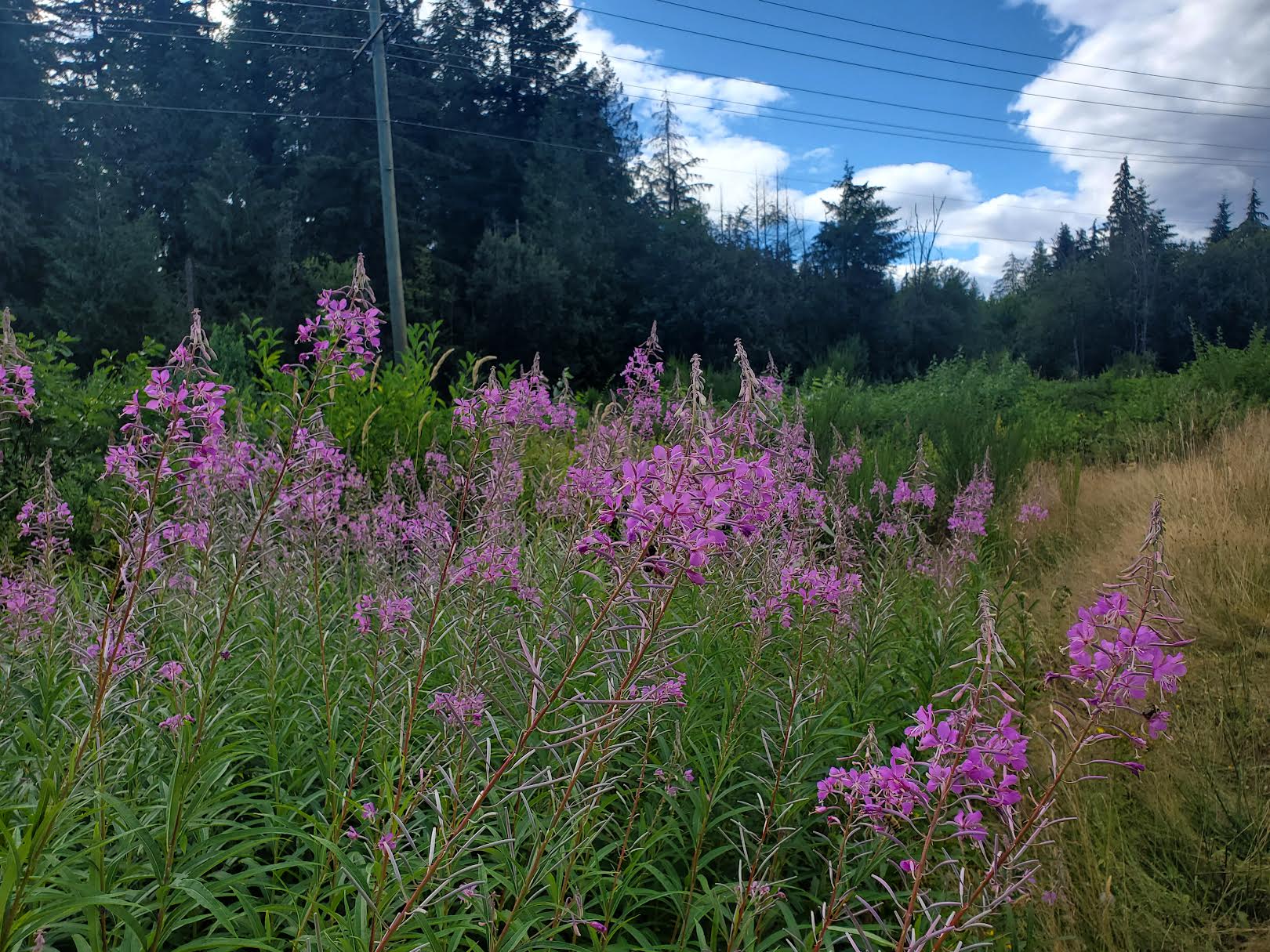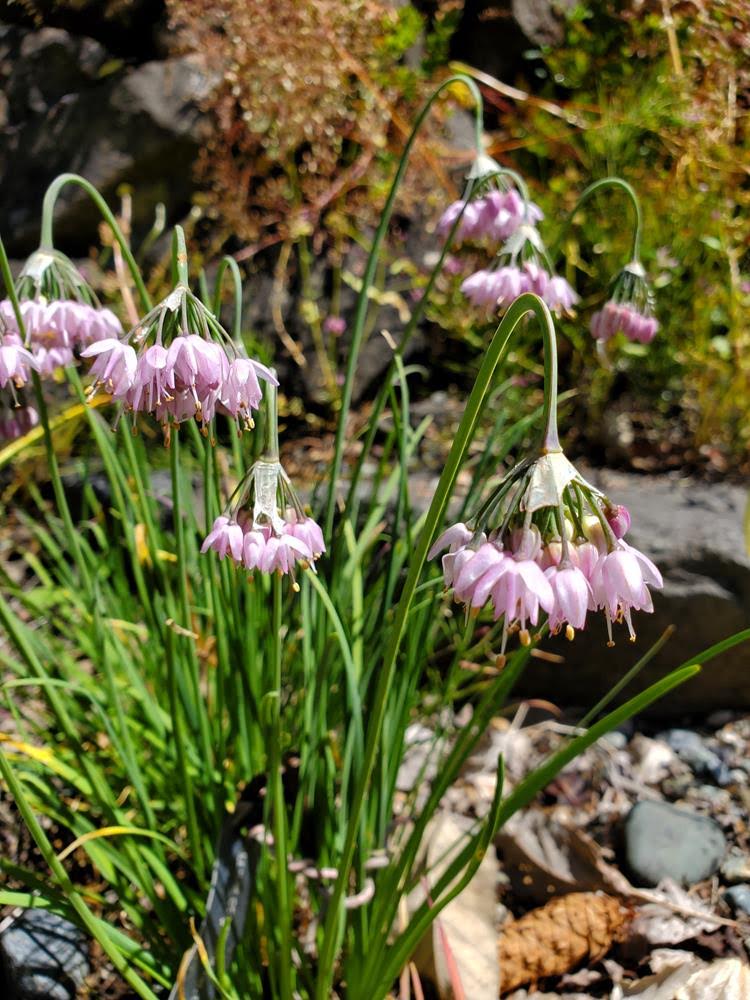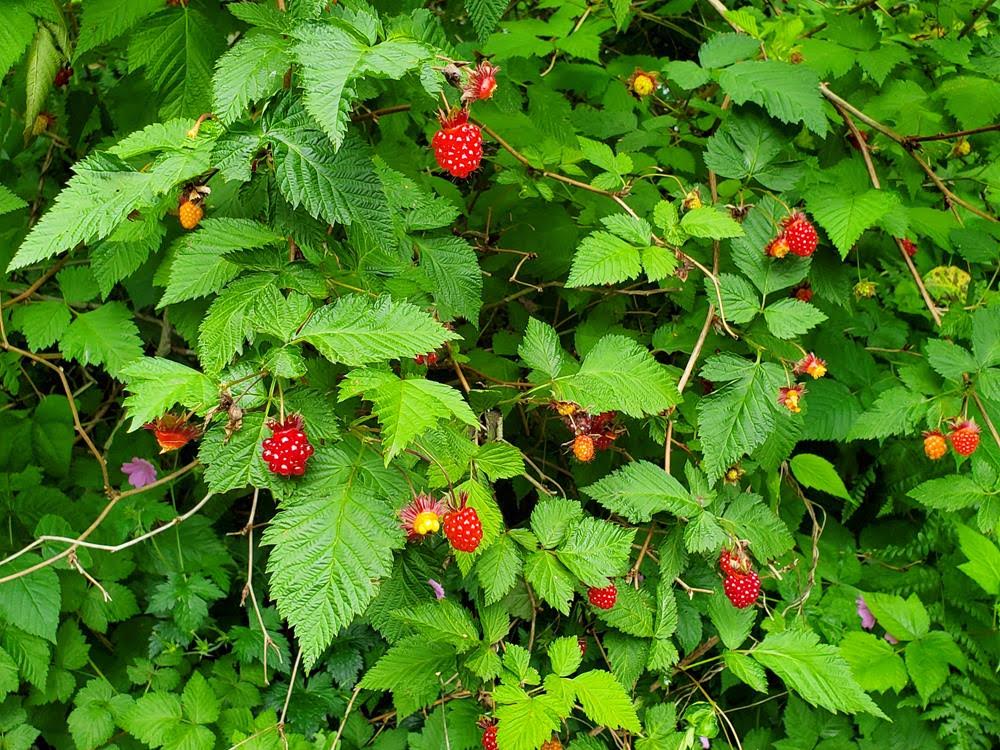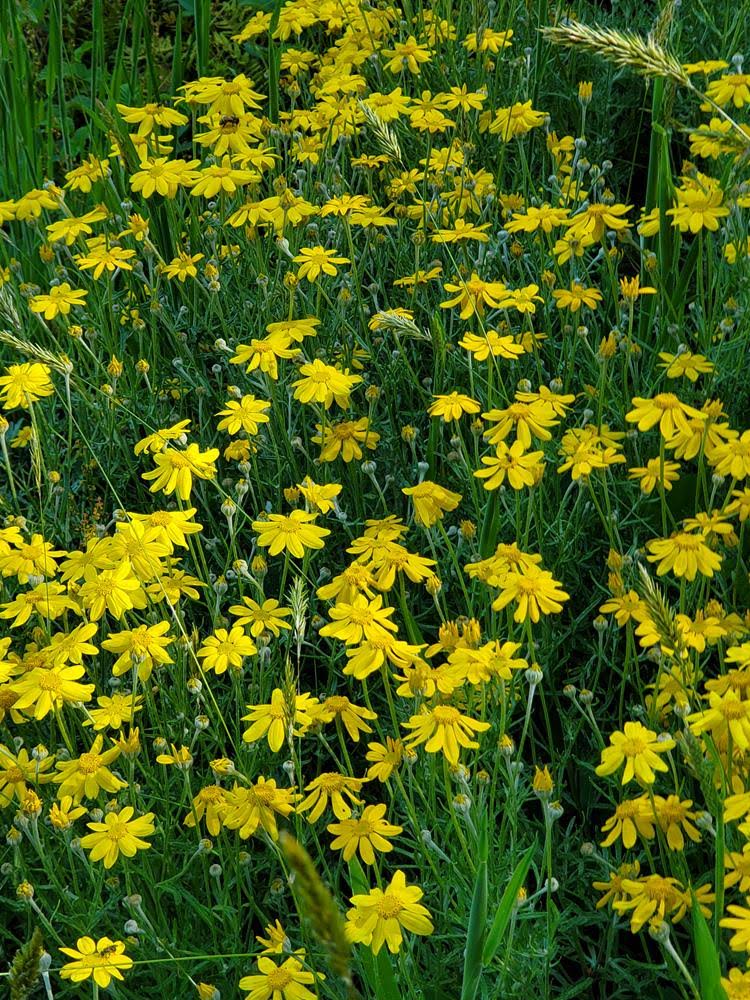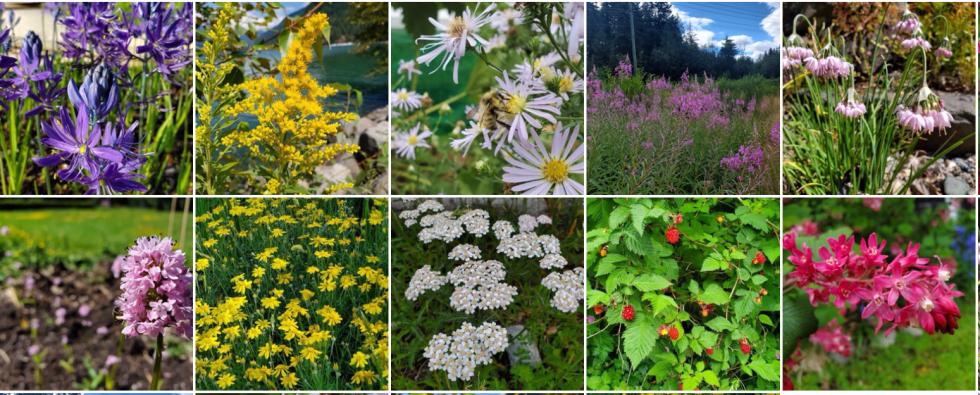
An Interview with Josh Thompson of Plan Bee Native Plants
The plant names in Josh’s photos below may be viewed by clicking on the first photo, which then starts the slideshow
Jen: I am here at Plan Bee Native Plants Nursery in Langley with owner Josh Thompson. Josh, can you tell me what inspired you to start a native plant nursery?
Josh: What really started me off was a few years ago, I started learning about bees. As I learned more and more, it taught me how important native plants are to not only bees, but butterflies, birds, and all the wildlife around us, and to the environment.
That led me to trying to find native plants for my own garden to see what I could personally do to help them, and to realizing how few of them were available in most nurseries. Most nurseries only had plants that were native to Europe or Asia,mainly.
I thought that was so silly that it was so hard to come by plantsthat grow here naturally.
That led me to wanting to start this business, to grow these plants, to make them more accessible for people like me to find,who want to make the environment better.

Jen: How many different species would you say you have growing here?
Josh: It varies from time of the year, but anywhere from 70 to 100.
Jen: As a gardener who is a settler on unceded Tsleil-Waututh, Squamish, Musqueam and Qayqayt land, I think it is especially important to make sure that my gardening practices are not causing further damage to ecosystems that have been sustainably cultivated and cared for since time immemorial by Coast Salish First Nations. You say on your website that many common gardening practices are actually harmful to the environment. Can you give some examples of things that we should stop doing in our gardens?
Josh: One of the big things – I think people need to be more content with having slightly messier yards or gardens. Thingslike leaving your leaves in the fall and letting them decompose naturally because those leaves are used by many species of insects to overwinter, such as queen bumblebees, and butterflies, caterpillars. When you get rid of those leaves, you're also getting rid of all these beneficial insects that would be playing vital roles in our ecosystem next year.
Even leaving hollow stems of plants intact or only cutting them back partially helps – because certain insects will also nest in those stems over the wintertime.
And one of the big ones is not using invasive species, or if you have invasive species planted in your yard, trying to get rid of them and replacing them with native alternatives, as these species are very destructive to natural areas.
Jen: Could you tell me about some of the benefits of gardening with native plants?
Josh: They are extremely beneficial to wildlife and nativepollinators. There's really no comparison in the benefits and the amount of diversity you can attract with native plants versus non-native introduced species.
They are lower maintenance, in general. I don't want to say no maintenance because they will require some maintenance, but in general you don't need to water them if you are planting them and establishing them in an appropriate location, similar to where they would be growing in the wild.
Ideally, you'd want to plant in the fall. Then the roots will establish over the winter, and you'll never have to water them. If you plant them too late into the spring, you might need to water them the first summer, but after that, you're good to go.
Of course, pretty much all these species are trees, shrubs, perennials, or annuals that will reseed themselves if you plant them in an appropriate place. So, this makes them more cost efficient because they'll come back every year. You don't have to rebuy them from the garden centre every year.
Because these plants have been growing and evolving in thisarea for thousands of years, they're the best plants you can have in the face of the climate changing and the changing conditions we're already experiencing. They will be able to adapt better in these new conditions.
Jen: You often see wildflower seed mix packages, do you recommend that people buy those?
Josh: Oh no, those are the worst! Many of these “wildflower”seed mixes have invasive species. They're almost never species that are native to your area. I've seen "native" wildflower seed mixes and wondered, native to where? The Pacific Northwest somewhere? Native to North America? They weren't native to the Lower Mainland, I can tell you that.
Wildflower seed mixes have minimal benefits. A lot of them are commercially produced. They have genetics from plants from who knows where that can pollute the local genetics of our local wild populations, which can lead to negative outcomes, make the plants that are adapted for our climate less adapted when they make seeds with these plants that are from who knows where.
Jen: I am interested in digging up some of my front lawn and creating a native plant garden. It’s a sunny spot that gets dry in the summer but wet in the winter. What plants would you recommend so that I have all season interest?
Josh: Well, you will want to plant a diversity of plants, so you always have something in bloom from early spring all the way to fall, ideally.
A lot of our early spring plants tend to be shrubs in the Pacific Northwest, so it's great if you can incorporate some shrubs like red flowering currant, Oregon grape, or trees like bitter cherry, Pacific crabapple or black hawthorn, which all bloomthroughout the spring.
A lot of our annuals have nice spring interest like sea blush, small blue-eyed Mary and farewell to spring. Toward mid- to late spring and early summer, you have things like nodding onion, woolly sunflower and field chickweed. In summer, you have yarrow and pearly everlasting. And in late summer or fall, you have Douglas aster, Canada goldenrod, gumweed and blanket flower.
Planting all these guys together will give you seasonal interest throughout the whole year, and provide resources to pollinators, birds, and other wildlife throughout the seasons.
Jen: I have a wet shady part of my garden and I'd like to add some native plants there. What would you recommend for those conditions?
Josh: There are lots of sedges and rushes that would do well. Slough sedge is a good one for wet shady locations. Not everyone's a fan of it, but swamp lantern or skunk cabbage is a great one. It actually doesn't really smell unless the leaves are damaged or bruised, which makes it quite a lovely ornamental plant and good for those wet shady locations. There's piggyback plant, and Siberian miner's lettuce which is a nice native annual. Vine maple, depending on how wet, can do pretty well in fairly moist conditions. Salmonberry would be a good one too.
Jen: The previous owners of my house planted those horrible invasive bluebells along a partly sunny side of the house. I'd like to dig those out and then plant some native bulbs. Are there bulbs that I could plant to replace them?
Josh: There are definitely bulbs you can plant. There's common camas or great camas which have beautiful blue flowers, and they are pollinator magnets. They attract a tonne of different species. There are also checker lilies which bloom a bit later in the year, in late spring or early summer. Depending on your conditions there is western tiger lily, which is quite lovely.
A lot of people don't like it because of the name, but death camas is another one that has beautiful flowers. And giant white fawn lilies, that bloom early in spring.
Jen: There are obviously a lot of native plants that are traditionally cultivated food sources. What edible plants could I grow in my garden that are native?
Josh: Well, I would like to say on this subject always do your research on any plants you're going to eat. Many of these plants have cultural significance to Indigenous people, so it's good to do your research and respect those traditions.
We have a lot of fruit producing shrubs and trees here.Salmonberries, thimbleberries, trailing blackberries, osoberry, kinnikinnick, Oregon grape – some people quite like them because they're sour – Pacific crabapples, black hawthorn.
Camas and nodding onion have edible bulbs.
Many native plants have edible leaves and parts of the stem, at least at certain times of the year, especially when new growthappears, that you can cook up. Things like stinging nettle can be eaten, used as tea or cooked in a sauté, and it's quite nutritious as well.
Fresh shoots and leaves of fireweed are edible. Fresh leaves of Douglas aster, goldenrod and yarrow are edible. All sorts of native plants have edible uses – at least parts of the plant.
Jen: Is there anything else that you didn't get to talk about that you want people to know about native plants?
Josh: A lot of people will say, "Oh, well I see a lot of bees in my garden." But the bees they're seeing are often honeybees, which are not native to North America and are actually quite destructive to our environment. If they weren't used for agriculture they'd probably be categorized as an invasive species here.
Or they'll see bumblebees which are also generalists. They're really easy going with their nectar needs. But often you're seeing these bees because they're one of the few species that can adapt to these urban conditions and to non-native plants. And so, you are not seeing a lot of the bees that are native and really beneficial to our ecosystem and environment. If you plant native plants, when you're paying attention, you'll see a lot more diversity in species of bees in your yard.
🖊 VMG Student Jen M.
📷 by Josh Thompson, except for the one of Josh himself by Jen M.
A Note from Jen: This article uses English common names for plants that are native to the Lower Mainland of what is colonially known as British Columbia. We acknowledge the harm of using colonial names for native plants and acknowledge the vast traditional knowledge of Indigenous Peoples of the huge array of plants that have been cultivated and cared for, for thousands of years. For information about halkomelem names of plants that are native to the Coast Salish area, see the Museum of Vancouver site: https://museumofvancouver.ca/indigenous-plant-guide-in-hnqminm.
